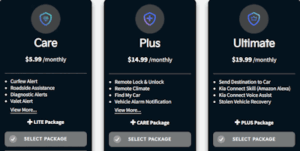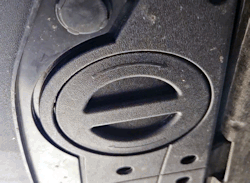Kia Access The Kia Niro is plugged in for its ~weekly charge, which is an excuse to open the Kia Access app, at which point I come face to face with what is lost since the initial free trial ended. And I now know what it will cost to get some functionality back. Looking at …
Category: Articles & Commentaries
Discussions on topics of interest to drivers concerning things they may not understand about their vehicles as well as articles on the future of the auto industry.
Permanent link to this article: https://dashboardsymbols.com/2025/09/volvo-and-polestar-models-get-added-to-our-get-out-page-with-a-nod/
Permanent link to this article: https://dashboardsymbols.com/2025/09/so-the-kia-access-app-was-but-a-free-trial/
@NHTSA looking into Tesla door handles — now look into ALL electronic latches!!!
Electronic latches Just a week or so after finding that China is rumored to be considering a ban on electronic latches (door handles), particularly those that conceal themselves (flush handles), comes news from Reuters that the National Highway Traffic Safety Association (NHTSA) is investigating possible door handle issues in over 170,000 Tesla Model Ys. And …
Permanent link to this article: https://dashboardsymbols.com/2025/09/nhtsa-looking-into-tesla-door-handles-now-look-into-all-electronic-latches/
Polestar back-up open page now stands alone
Polestar back-up open We’ve created a new page so as to separate Volvo and Polestar. A Polestar back-up open page now stands alone. Back-up open and start procedures are made necessary to account for the batteries in key fobs dying, as they commonly do. This change, and the recent separation of the two brands back …
Permanent link to this article: https://dashboardsymbols.com/2025/09/polestar-back-up-open-page-now-stands-alone/
Volvo, Polestar now have their own back-up start pages
Back-up start pages After updating the Volvo back-up start processes, it became obvious that Polestar, which shared the page, and Volvo needed their own separate back-up start pages. We added two new back-up processes to Volvo. The new processes belong to the EX30 and EX90 electric vehicles. These vehicles use rechargeable key tags rather than …
Permanent link to this article: https://dashboardsymbols.com/2025/09/volvo-polestar-now-have-their-own-back-up-start-pages/
Two additions made to Volvo back-up start options
Volvo back-up start Continuing our update of Volvo back-up start and open processes results in the addition of two new options. With the introduction of the EX30 and EX90 electric vehicle (EV) models comes some interesting and disturbing developments. We discussed the disturbing in a previous post, as there is no longer a mechanical key …
Permanent link to this article: https://dashboardsymbols.com/2025/09/two-additions-made-to-volvo-back-up-start-options/
Volvo takes a step backwards with its 12 volt terminal
12 volt terminal We’ve assembling the information needed to create a jump start video for Volvo electric vehicle (EV) drivers and it turns out that to get in, access to what the company calls a 12 volt terminal is needed. Well it turns out Volvo’s 12 V terminal is a worse replica of what is …
Permanent link to this article: https://dashboardsymbols.com/2025/09/volvo-takes-a-step-backwards-with-its-12-volt-terminal/



Volvo and Polestar models get added to our Get Out page, with a nod
Get Out page The spread of electronic latches are getting attention of late, as a result of issues with flush Tesla Model Y door handles. We’ve used this to tout our Get Out page and (hopefully) rattle some cages about the dangers of electronic latches the page addresses. And we now have two more entries …
Continue reading